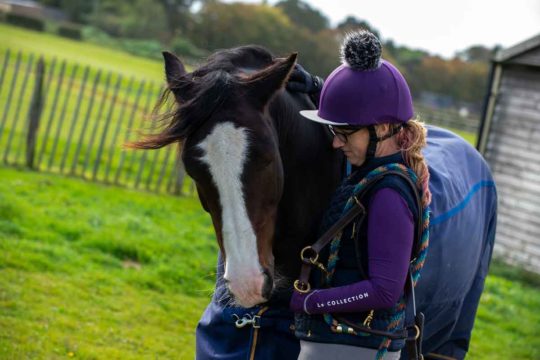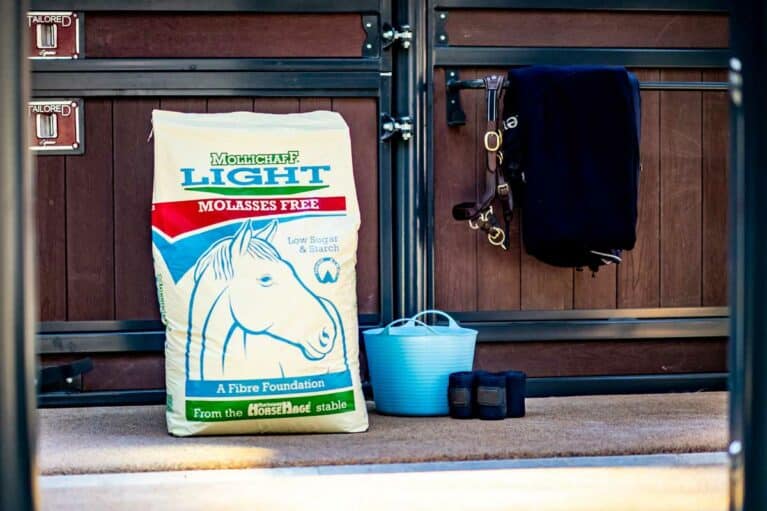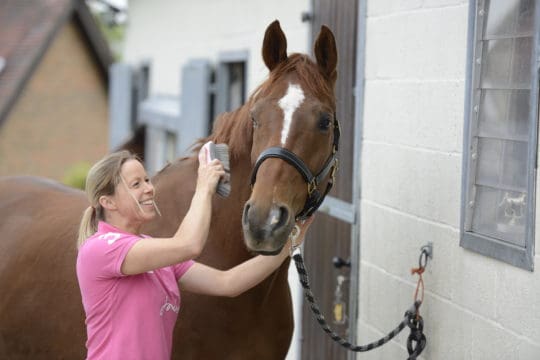
Most Read Articles

HorseHage sales and feed advisor Sarah Turnbull looks at the importance of dust-free forage and chaff for autumn feeding
Throughout thousands of years of evolution, the horse’s digestive system has developed to become ideally suited to digesting large quantities of fibrous forage. In fact, a diet high in fibre is essential for both the horse’s physiological and psychological wellbeing. However, with the autumn flush of grass just around the corner, it’s important to consider which type of forage is best for each individual horse.
The problem with hay
Autumn is often a time of particular concern, as the weather remains warm and the grass is still growing fairly rapidly. To help maintain healthy body condition in your horse, it’s important that calorie intake is strictly controlled around this time to prevent rapid weight gain. While stalky, late-cut hay will often contain a low level of calories, it may be of particularly poor quality in terms of nutrients. It can also be dusty and mouldy, which can give rise to respiratory problems, or it might simply be unpalatable to your horse. Unless you pay for a hay analysis, it will be difficult to know the nutrient levels this hay is providing, and if the weather is particularly favourable for hay making, even the coarsest bale may have a surprisingly high sugar content.
Another option is to choose an appropriate dust-free bagged forage product that is low in starch, sugar and calories, such as HorseHage High Fibre or HorseHage Timothy. This type of product goes through a unique fermentation process, converting the naturally present sugars to the alternative energy source volatile fatty acids and will provide sugar and calorie levels consistently lower than those of good-quality hay, while still supplying high quantities of fibre.
What’s in the bucket?
A further complication with good doers is ensuring they receive sufficient vitamins and minerals. Often these individuals are given a token feed, far smaller than the manufacturer’s recommended amount, leading to reduced vitamin, mineral and protein intake. Vitamins and minerals are essential to almost all body functions, from maintaining a healthy metabolism, to hoof and bone growth and development.
Mollichaff HoofKind is a very suitable complete feed for horses on a calorie-controlled diet, being a palatable blend of oat straw, alfalfa, fibre pellets, soya oil, vitamins, minerals, trace elements, antioxidants and biotin. It’s low in starch and sugar, high in fibre and does not contain any cereals. This means it provides a low amount of high-quality protein and delivers limited, controlled energy from digestible fibre and oil-based ingredients.
Mollichaff Light is molasses free and another versatile unfortified chaff product that can be used as part of a bucket feed or as a partial forage replacer. This low-starch, low- sugar chaff does require a vitamin and mineral supplement to be added, though. Alternatively, a balancer, some nuts or mix at the recommended amounts can be added if the additional calories are required for work or weight maintenance.
Look at the individual
It’s always essential to take into account medical conditions, weight, condition, age, size, temperament and workload when deciding upon the most suitable feeds and forages to support a horse’s health and performance at all times.
For more information on HorseHage and Mollichaff, visit horsehage.co.uk











